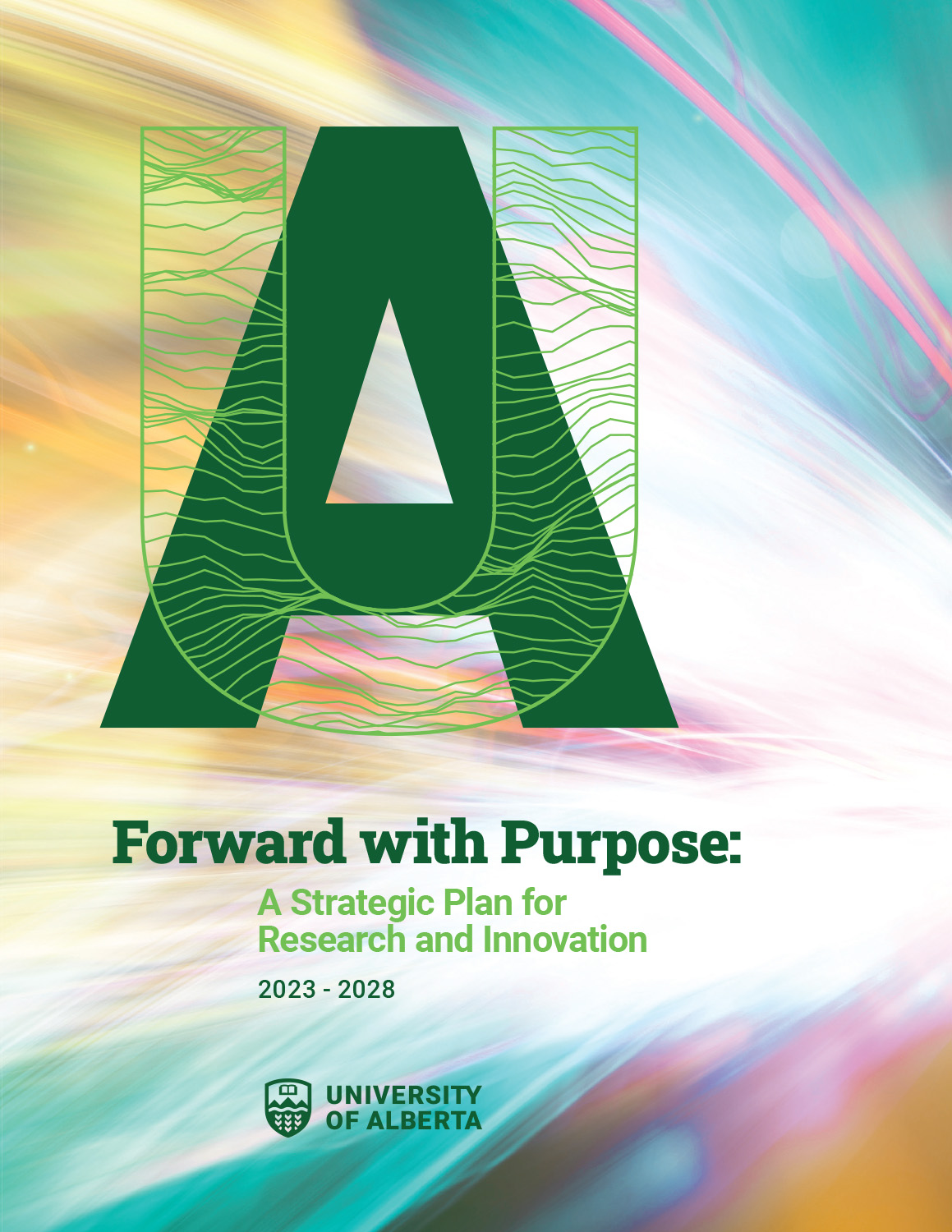Our Research


Research is at the core of our every endeavour. Since 1908, the University of Alberta has pushed what's possible, evolving into the world-renowned institution we are today. By sharing knowledge, enabling collaborative creation and driving discovery — we work to make the world a better place.

Forward with Purpose: A Strategic Plan for Research and Innovation
2023-2028
This first institutional strategic plan for research and innovation presents a bold new step in defining areas for maximum impact to address the grand challenges of our time.
Read the full planLife-changing research
Purpose is power. Solving our world’s most complex challenges demands new ways of thinking and doing.

U of A leads the Prairie research hub
Cultivating cross-disciplinary strength will fast-track new discoveries and advance pandemic preparedness.

Personal data shaping identity
Art taps virtual reality for an unexpected and immersive experience — provoking new perspectives.

A lifeline in the harshest environments
Researchers are developing a new communications system to help protect troops in combat.

Fewer shortages, new discoveries
The Canadian Critical Drug Initiative will strengthen our supply chain for critical medicines and advance new breakthroughs.

We are tackling the challenges of today...

Energy + Environment
Can you set out to energize the world without compromising the earth? At the University of Alberta, we believe we can, and...we are.

Artificial Intelligence
We are one of the world’s leading AI research institutions. And to think it all started with a game of chess.

Health + Well-being
We are at the forefront of an emerging approach to health and wellness that expands on efforts to understand, diagnose and treat disease through advances in technology.

Indigenous Research
We are home to seven academic and affiliated institutes, centres and initiatives dedicated to Indigenous research.

Agriculture + Food
From the land to the lab, we are working on incredible advancements to find ways to produce more food, use less energy, and strike a better balance between our economy and our environment.

Social Transformations
We are exploring what it means to live, learn, work, express ourselves and advance social change through critical, creative and empirical research.
CENTRES + INSTITUTES
We provide researchers with the infrastructure to achieve far-reaching impacts. Home to some of the world's best facilities and resources, Centres and Institutes foster collaboration among strategic networks and partners. From discovery to innovation, to technology development and evidence-based policy recommendations — we facilitate research across the entire spectrum.
Learn More
